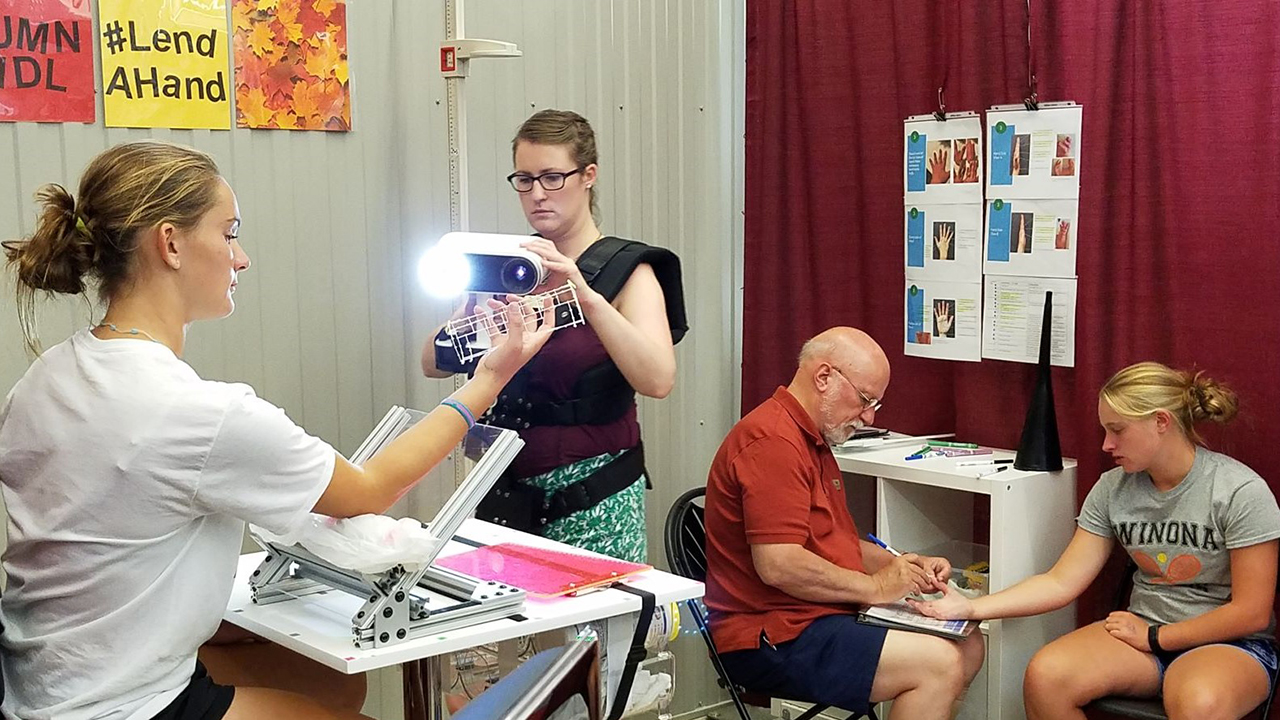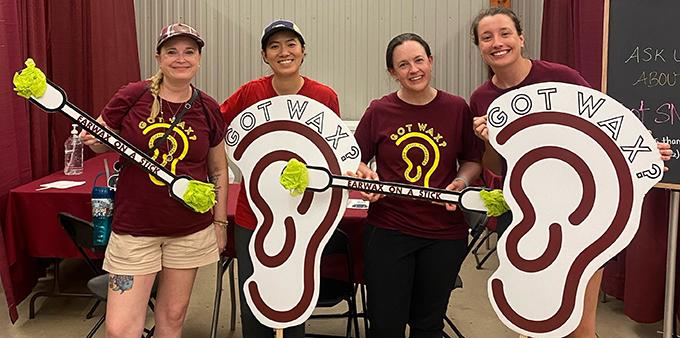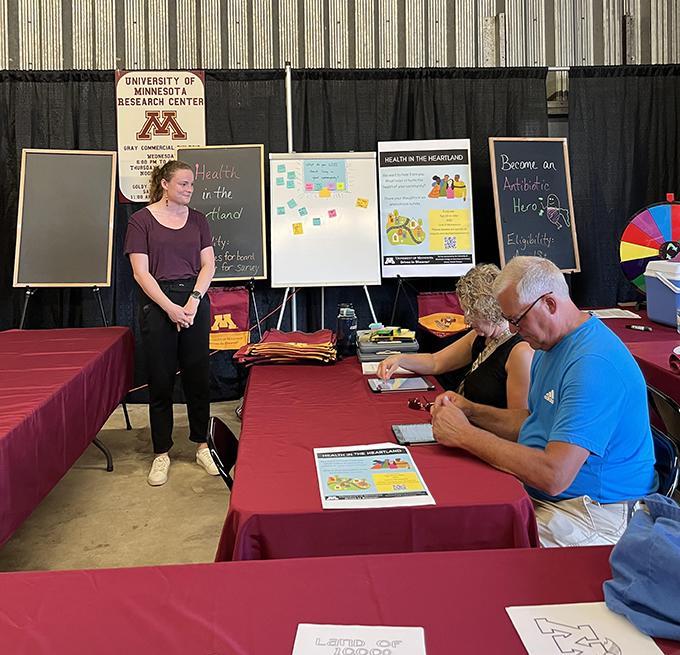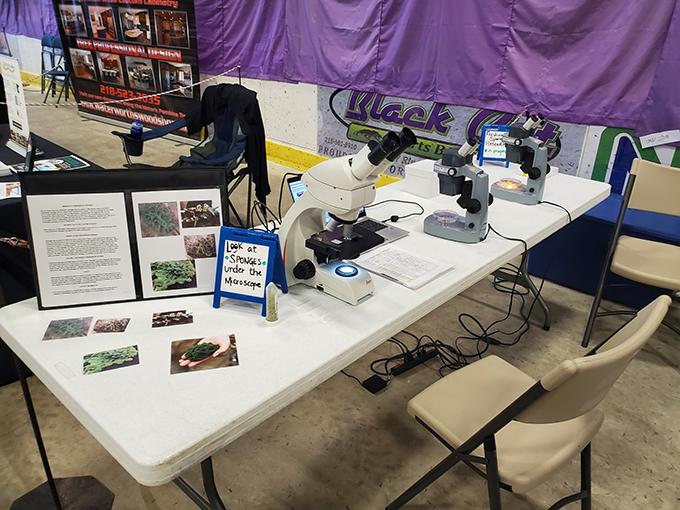
As August approaches, so does a 12-day opportunity for UMN researchers to engage research participants from tens of thousands of fairgoers: the Driven to Discover (D2D) Research Facility at the Minnesota State Fair. As of 2022, D2D also has a presence at rural county fairs. Since 2014, D2D has recruited nearly 130,000 individuals and facilitated 329 research studies led by researchers from 107 departments across 38 colleges and partners.
The Great Minnesota Research Accelerator
The idea of conducting research at the Minnesota State Fair was the brainchild of Logan Spector, a professor in the pediatrics department at the Medical School and an East Coast transplant who first visited the fair as an adult and couldn’t believe the number of people there. He connected with School of Public Health Professor Ellen Demerath and together they brought a study to the fair in 2010. Called Gopher Kids, the longitudinal study recruited approximately 700 kids from approximately 500 families, with 70% returning to participate in one of the two following years.
After several years in different spaces, including the former SPAM building, and tens of thousands of study participants, Spector and Demerath realized D2D was a viable enterprise, with buy-in from faculty and fairgoers. They secured an Research Infrastructure Investment award from OVPR and built a building specifically for their research purposes in 2017. With space for up to 50 researchers per day, the D2D schedule accommodates morning and evening studies each day of the fair —the parade that runs in front of the building daily at 2 in the afternoon is a natural transition point.

This year fairgoers can expect to see more than 45 studies with a wide range of topics including earwax, dog diets, THC gummies, frozen food preparation, and liver cancer. Participants will be asked to complete tasks such as completing surveys about weight loss and reproductive health; get 3D scans of their hands; play video games; answer questions about daily life in the aftermath of the COVID-19 pandemic; and participate in the largest long-term study of early brain and child development in the country.
Need To Recruit Rural Minnesotans
While the Minnesota State Fair does gather residents from across the state, 75% of D2D research participants come from the Twin Cities metro area, which is why D2D expanded into rural county fairs last year and will have a presence at county fairs again this year.
Spector called D2D’s expansion into the county fair circuit a success: “Here in the big city, the University can seem very remote. To people in Greater Minnesota, it can seem like we’re not very interested in their lives. By going to the county fairs, it shows that we are.”
Last year’s county fair expansion engaged nearly 1,800 participants in 37 research projects, including a study into mental health disparities experienced by rural youth, led by Meredith Gunlicks-Stoessel, an associate professor at the Medical School.
Rural families have reduced access to mental health professionals and tend to underutilize the services that are available, which was why Gunlicks-Stoessel was excited to have the unique opportunity to talk to rural families with the goal of understanding their preferences for services and barriers to receiving services.
“The fair setting creates such a comfortable and easy way for people to participate in research, many of whom have never participated in a research study before,” said Gunlicks-Stoessel. She is returning to the county fair circuit this year with slots scheduled in Rock and Stevens Counties.
Researcher Experiences
Comparing Urban and Rural Attitudes toward Vaccinations
“This will be our third year participating in D2D and second year formally at the rural county fairs,” said Medical School Professor and Associate Dean for Research Catherine McCarty. McCarty’s initial project, called “Judge the Jab,” was a study of attitudes towards vaccinations and sources of information about vaccines. Her study found that people who chose not to be vaccinated were more likely to go to social media and their friends for information about the vaccine and that this was true for both urban and rural Minnesotans.
“I think there is huge potential to work with people who have chosen to be vaccinated to provide them with the words and information to encourage their friends and family to also get vaccinated,” McCarty said.

Developing Best Approaches for Supporting Children’s Language Development
Lizbeth Finestack, a professor of speech-language-hearing sciences and director of the Child Language Intervention Lab, has conducted several studies at the fair, all centered around better understanding children’s language development. For the past two years her team has been testing out an assessment they developed to evaluate children’s use of grammatical forms like the past tense and third person singular.
“Across the years, we have had more than 1,000 children participate at the state and rural fairs, which is impressive given that our studies require kids to sit and focus for 20 to 30 minutes,” Finestack said. She has used the data to apply for federal grants, which have been awarded, and is currently conducting a five-year randomized controlled trial examining the best approaches to use when supporting children’s use of grammatical forms.
“I have had families come back each year looking for new ways to participate,” said Finestack. “People at the fair are excited to be there.”
Citizen Scientists Expand Our Knowledge of Freshwater Sponges in Minnesota

Anthony Schroeder, an associate professor at the University of Minnesota Crookston (UMC), who is a part of a project with three other faculty members from UMC that focuses on determining the distribution and diversity of freshwater sponges in Minnesota.
“Because we have so many lakes and rivers in Minnesota, we would be unable to efficiently sample across the state, so we are involving citizens to help with sponge collections,” Schroeder said. Their project distributes collection kits that instruct citizen scientists how to collect sponges and basic water quality data, which are sent to UMC through a prepaid mailing envelope. UMC faculty and undergraduate students study the sponge and then send details, including photos and identification, back to the citizen scientists.
“The state and rural fairs provide us the opportunity to reach a lot of citizens. Once we talk with them about the research, many citizens are interested in participating,” Schroeder said, adding that the project has resulted in the identification of freshwater sponges that haven’t previously been reported in Minnesota.
D2D Serves Dual Purpose
With two directors in Spector and Demerath and a manager, Annie Hotop, D2D is a small but mighty operation, playing a pivotal role in many significant UMN research projects while also serving as a public face for millions of fair-goers.
“We see D2D as enabling research but also serving a secondary purpose of bringing research to the public, making researchers look less like eggheads in an ivory tower and more like your neighbors who want to do science,” said Spector. “As far as we’re concerned, D2D should be an institution. We strive for sustainability. We’re always looking for academic funders to keep us running and help us expand.”
This year you can visit D2D at the Minnesota State Fair from August 24 through September 4 or at Rock County Fair in Luverne (July 26 through 29), Stevens County Fair in Morris (August 9 through 13), and Beltrami County in Bemidji (August 10 through 13).